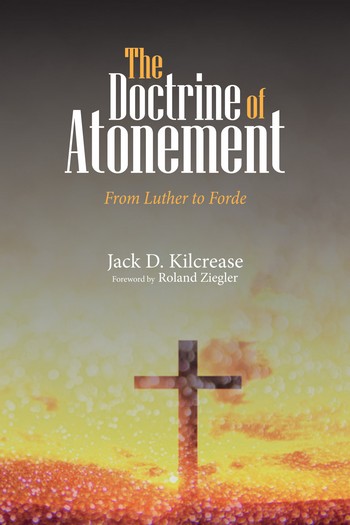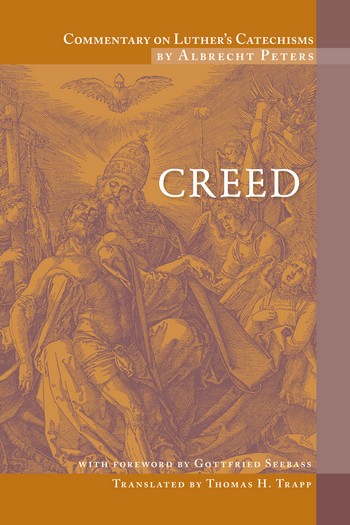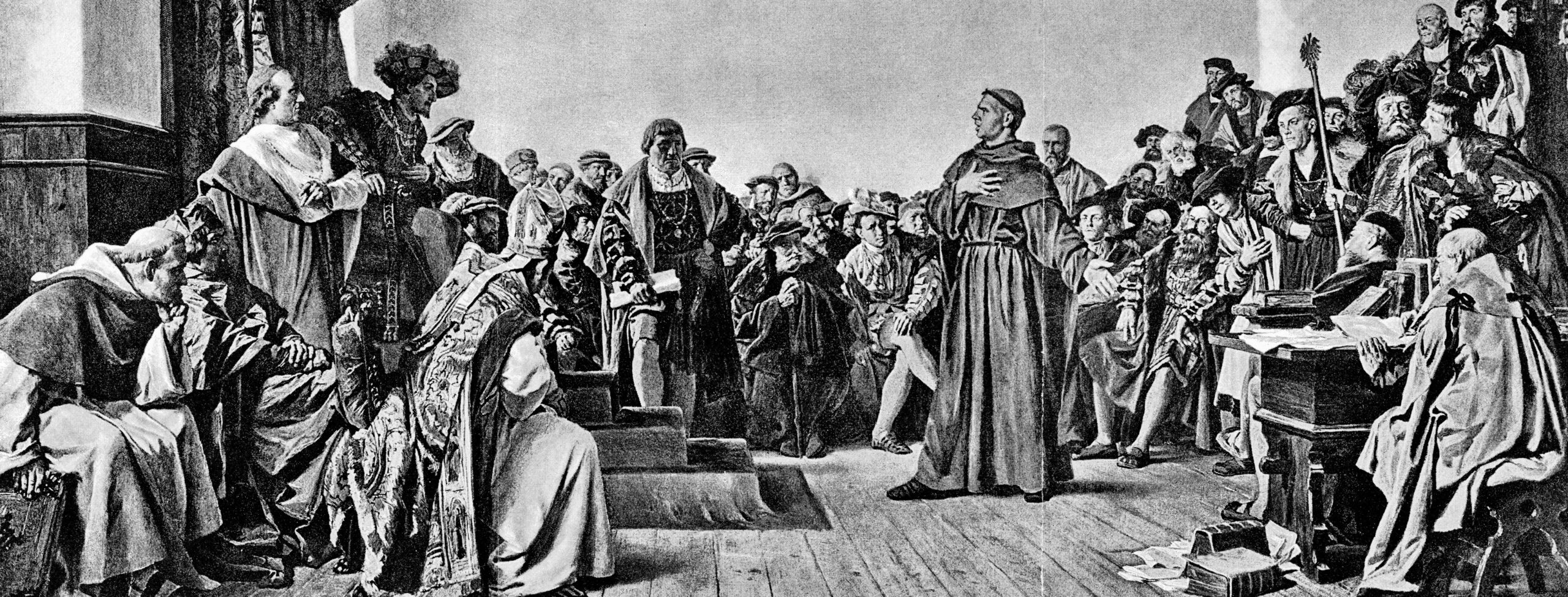Jack D. Kilcrease
The Doctrine of the Atonement from Luther to Forde
Review
In this book (Jack D. Kilcrease, The Doctrine of the Atonement from Luther to Forde (Eugene, Oregon: Wipf & Stock, 2018), Dr. Kilcrease skillfully accomplishes many important feats. In a fast-moving and trim volume, Dr. Kilcrease engages the written works of theologians from Luther to Forde. He focuses and clarifies so that the reader can capture truth and come away with understanding.

Beginning with the Church Fathers, there were fanciful and even fantastic ideas of the atonement. Disagreement among theologians left a distressing situation. Their writings present a dizzying array of contradictions, and one view of the atonement is even called “the kaleidoscopic view.” I complained about this and pleaded, “We are betting the farm on the atonement. This failure of the theologians to agree undermines our assurance of salvation.”
Luther cut through the confusion. In his Large Catechism and other writings that Kilcrease surveys for you, Luther resolved the two leading views into a beautiful harmony. Luther’s view has the convincing power to bring assurance of salvation when we receive it by the means of Baptism, the Sacrament of the Altar, and preaching.
For me, relief first came in 2011 when Concordia Publishing House invested in translating Albrecht Peters’ commentaries on Luther’s catechisms into English. Peters explains Luther’s resolution of the conflicting ideas of the atonement as set forth in the Large Catechism. It was an epiphany, and I burst out in a blog post titled, “Finally! Some satisfaction in the atonement” It was bread and water, but it was enough.[1]
But now, from Luther’s own kitchen, Dr. Kilcrease adds to that bread and water a multi-course banquet. I invite you to this feast.
The book has seven chapters. The first sets forth a confessional Lutheran paradigm for approaching doctrines in general. This is helpful to have before coming to the doctrine of the atonement.
Chapter 2 celebrates Luther’s resolution of the competing and conflicting views, and chapter 3 tracks the development of Luther’s view in the Lutheran confessions and Lutheran scholasticism. I will come back to this below.
The remaining chapters cover subsequent developments, all of which to one degree or another are defections from Luther’s resolution. Dr. Kilcrease, in his characteristic industry and fairness of actually engaging the body and intent of their writings, distinguishes the various theologians as to their degree of wandering from the truth and the differing directions of their wanderings.
Thus, in chapter 4, he classifies theologians like Werner Elert, Gustaf Aulén, and Gustaf Wingren as moderate revisionists, but in chapter 5, he classifies Wolthart Pannenberg, Robert Jenson, and Eberhard Jungel as radical revisionists. This is not mere or lazy labeling. Dr. Kilcrease’s treatment makes evident what is meant by revisionist, moderate, and radical. Upon fair and competent denotative meanings of these words, the chapters are fully convincing that Kilcrease has zeroed in precisely on what he is talking about.
Chapters 6 and 7 deal with the thought of Gerhard Forde. These are important chapters because they pretty well describe the current state of revision and defection from Luther not only in Forde but in many others.
Kilcrease explains why this takes two chapters. To understand what Forde does to the atonement, one must understand firstly what he does to the Law. Chapter 6 accomplishes this feat.
Chapter 7 develops Forde’s “up and forgive” theory of the atonement. As Forde sees it, our problem is not that God is angry over our hatred of him and our neighbor, our original and particular sins against the first and second tables of the Law. Rather, our problem is our lack of faith that God in his love will, without the need of any fulfillment of the Law either by us or a substitute for us, just up and forgive. So the cross, rather than being the full exhaustion of God’s wrath and the Law’s penalty for sin upon Christ in our place, is a grand gesture to convince us that all along, God had stood ready to just up and forgive us. The cross, as Forde teaches it, is basically about convincing us of God’s (lawless) forgiveness rather than being basically about satisfying God and turning his wrath to a propitious, forgiving stance.
Kilcrease does the heavy lifting of examining the evidence upon which Forde bases his errors. In some cases, Forde cites passages from Luther that actually refute Forde and maintain the orthodox Lutheran view that Kilcrease teaches in chapters 2 and 3. In other cases, as wild as this might seem, Forde actually has no basis at all. He merely asserts premises that his argument needs simply because his argument needs them. I can’t bet the farm on this, and neither should you.
Contemporary revisionists have an aversion to the Law. They want to up and do away with the Law. They do this in the name of Christ being the end (goal) of the Law, but without letting Christ accomplish it by his work on the cross. Since they cannot abide the Law in the way Luther abides it, they must make of the cross something different than a solution to our problem under the Law. In their view, the Law says nothing essential about God, nothing that remains true about God eternally. It is as if, though the Law is one of God’s words, the Law is not authentic. It is as if the cross and the Gospel say, “Though God said the Law, that is not really true of him, and He didn’t really mean it.” This is part of contemporary Lutheran selectivity by which we like to say “is means is” in “this is my body,” but wrath does not mean wrath in Romans 1 and 2.
Coming now to Luther’s resolution, which is Kilcrease’s resolution in chapters 2 and 3, understand that I am making a portrayal mostly in my own words as my own take-away from Luther, Peters, and Kilcrease. You should read Kilcrease yourself, because his verbal formulation is different than how I am formulating it here, though I believe he and I are, each in our own words, presenting the same teaching.
The fall into sin brought manifold damaging effects. The ruin of sin is compound. The atonement had to remedy all of the fallout of the fall. The atonement needs to deal with sin in and of itself, and also with the consequences of sin. We need atonement for the iniquity, judgment, condemnation, and punishment of sin on one hand, and the bondage, grip, power, and tyranny of sin on the other.
The penal substitutionary view of the atonement focuses on the consequence, the wrath, the judgment, the punishment. The Christus victor view or the conquest of the tyrants and enemies view focuses on the grip and dominating power of sin via our enemies: the devil, the world, our sinful selves, and even the Law (in a certain aspect). Theologians like Anselm have focused on penal substitution, while ones like Aulén have focused on the conquest of our enemies. The rivalry and apparent incompatibility of these views cause a sore distress because they undermine assurance of salvation.
But Luther and Kilcrease resolve these two. How did the tyrants get their power over us? How did our enemies get their grip? They got it because of the just verdict of the Law that we are sinners. Kilcrease summarizes this piece of Theodosius Harnack’s presentation of Luther’s view:
The law was an eternal and objective standard that needed to be fulfilled by sinful humanity. The demonic forces that held humanity in their sway (law, death, and the devil) were not masters who had assumed their offices arbitrarily. Rather, these forces dominated the world because of human sin, and were manifestations of God’s wrath. [Kilcrease, pp. 28-29.]
Kilcrease summarizes this piece of Luther’s view directly from Luther in the Large Catechism:
Luther’s combination of the two motifs becomes even more pronounced and explicit in his more-detailed account of the Large Catechism. First, the Large Catechism clarifies how bondage to the devil and the wrath and law of God are connected.
“For when we had been created by God the Father, and had received from Him all manner of good, the devil came and led us into disobedience, sin, death, and all evil, so that we fell under His [God’s] wrath and displeasure and were doomed to eternal damnation, as we had merited and deserved.”
In other words, the demonic forces of the world gained their power over human beings as a result of sin. The devil led human beings into sin, thereby making them slaves to “sin, death and all evil.” The violation of God’s law incurred his wrath, which allowed humans to be held by these powers of darkness. These forces serve as a mask of God’s infinite wrath against sin. [Kilcrease, p. 44]
The judgment of the Law is against us because of original sin that is real sin, condemning sin, and our sin, not just Adam’s. By original sin, we hate God, hate our neighbors, and worship ourselves. We have fallen short from our creation, and we are iniquitous from the heart. The judgment of the Law is against us because of the particular sins we commit because, by the bondage of the will in our original sin, we are slaves to sin.
On the basis of this judgment of the Law, we are given over to jailors, who are our enemies, the tyrants that hold us: the devil, the world, the sinful self, and the Law (because by the flesh it is weak).
That being so, through the cross, Jesus achieves not just one but both of our needs. God accepts the active obedience of Christ for us and his innocent suffering of the penalty of the Law for us. This penal substitution reverses the verdict of Law that was against us. Since the judgment of the Law was the basis of the grip of our enemies, the reversal of the verdict also looses their grip upon us. They no longer have the legal authority that our prior verdict of guilt gave them. Thus they are conquered and we are delivered. Their former lawful custody now is unlawful thanks to Christ.
In the single stroke of the cross, Christ accomplished both parts of a unified atonement for us. He is at once our penal substitute and our conquering deliverer.
This is the beautiful harmonization of two views of the atonement, vicarious penal substitution and the conquest of our enemies. Adding to the beauty is how the harmonization prioritizes justification. Christ openly triumphs over the tyrants of darkness in the cross, but He does so by breaking their legal authority under the former verdict of guilt that now is washed away by his blood.
By rendering infinite satisfaction and neutralizing the threat of the law, Christ is also victorious over the demonic forces of the old creation. All these forces are masks of God’s wrath, in that “the whole creation is a face or mask of God.” The powers of darkness enslave and define persons living apart from the grace of God. When the law is satisfied, the proclamation of the word of God first kills and then breathes new life into the person of faith:
“I am crucified with Christ.” Paul adds this word because he wants to explain how the Law is devoured by the Law. . . When by this faith I am crucified and die to the Law, then the Law loses all its jurisdiction over me, as it lost it over Christ. Thus, just as Christ Himself was crucified to the Law, sin, death, and the Devil, so that they have no further jurisdiction over Him, so through faith I, having been crucified with Christ in spirit, am crucified and die to the Law, sin, etc., so that they have no further jurisdiction over me but are now crucified and dead to me.” [Kilcrease, p. 48, quoting Luther and citing LW 26:165; WA 40.I:280]
I read the first three chapters of Kilcrease in the airplane on the way to the LCMS synodical convention and re-experienced the epiphany as when I had read Peters’ commentary on the Large Catechism. Then at the convention, Rev. William Weedon, Convention Chaplain, had selected a reading from Zephaniah for one of the services of daily worship. Get a load of this:
“The Lord has taken away the judgments against you; he has cleared away your enemies.” (Zephaniah 3:15a, ESVOpen in Logos Bible Software (if available))
Wham! There both achievements of the cross are, together, in a half verse. “The Lord has taken away the judgments against you.” Penal substitution. “He has cleared away your enemies.” Conquest of our enemies. The judgments are removed first, and that also clears away our enemies. Luther’s and Kilcrease’s doctrine of the atonement is stated there compactly.
As I said, I have exposited this harmonization mostly in my own words. You will want to exchange a few copper pennies for the gold of Kilcrease’s book and read it properly in his words. Besides his own superior words, you also will enjoy many more threads of his tapestry in addition to the few strands that I have presented here.
[1] Albrecht Peters, trans. Thomas H. Trapp, Commentary on Luther’s Catechisms, Creed, pp. 161-62 (Concordia Publishing House, St. Louis: 2011):
“The reformer thus takes up both constellations of motifs: on the one hand, Christ as the one who vanquishes all the powers of destruction and powers of death and, on the other hand, Christ as our substitute and as our propitiatory offering over against God’s holy, judging wrath. Luther links both aspects in such a way that the hidden emphasis from the Western Church and the Middle Ages, on the punishing suffering of Christ, persists. The propitiation of God’s wrath remains the center, in terms of content, in the catechisms as well; at the deepest level, it is God’s curse of judgment that delivers us over to the powers of destruction. These powers stand in a unique relationship with God; according to the Large Catechism, on the one hand, they are our “tyrants,” caught up in rebellion against God, and yet, on the other hand, they are the “harsh schoolmasters” that God Himself put in place, which means that they are the authorities who run the prison; the real prison came into existence for us when God gave us over under the condemning wrath of His Law. “Death, sin, hell, all of these come from the wrath of God; they are its harsh schoolmasters.” Even among these ominous allies, Luther intimates that there is a pecking order; Satan stands at the top; he “clearly is to be identified as a prince over sin and the prince of death.” This is the specifically theological dimension; to it corresponds an anthropological aspect. As we are free, in heart and conscience, from the accusation of the Law and from the wrath of God that thereby brings its onslaught, we are free, as well, with respect to the battle against the satanic demons; for us, these have been rendered harmless, because the wrath of God no longer stands behind them.

“By means of these insights, Luther deepens and personifies both the “classical theory of the atonement” of the Christus Victor model as well as Anselm’s teaching about satisfaction. By means of his hyper-realistic and drastic images of Christ’s victory over the dark comrades, sin, death and the devil, he reaches back into the tradition of the early Church and the Eastern Church and renews its emphasis on the motif of a battle that encompasses the entire earth. But because he points out, in, with and under the onslaughts of the powers of death, how Christ fully suffers the deepest, holy wrath of judgment from God that hangs over all human guilt, and inserts the Law at this point as well, into the list of the powers that effect the curse, the reformer deepens the early Church’s confession about Christus Victor by means of insights that are set forth initially by Paul: precisely by suffering the full consequences of the divine curse of judgment upon the guilt of human sin, Jesus Christ overcomes the original power of those that destroy.”




